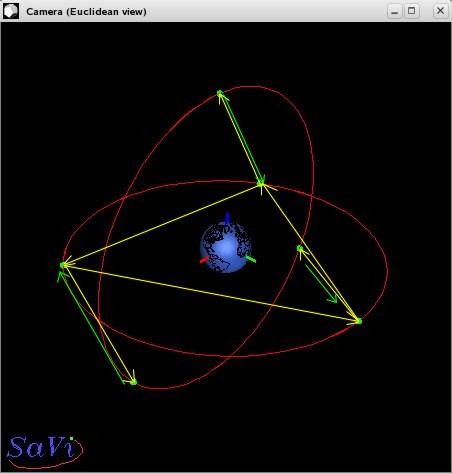
Final project: The Martian Network
4. Network Design
The terminals on the Martian surface must communicate with each other and with the space station on the planet Earth. To ensure this, the following scenario is envisioned.
Each of the three ASS satellites maintains a link with:
one of the remaining two ASS satellites
one of the satellites in the polar orbit
while each of the satellites in the polar orbit maintains a link with the ASS that communicates with that satellite.

The links between satellites.
The
line-of-sight on these links is never obstructed. When the space station on Earth wants to talk to
one of the terminals on Mars, the signal is first transmitted with the NASA's
Deep Space Network (DSN) antennas to one of the three ASS satellites orbiting
around Mars that can be seen from the Earth. If the terminal is in the area
covered by that satellite, the signal is directly forwarded to the terminal. In
the opposite case, the signal is relayed to the satellite that sees the
terminal. In some cases multiple hops will be needed. All satellites must keep tracking information for each
terminal to know where the signal has to be forwarded to. This is done similarly
as in the existing cellular networks on Earth.
On the other hand, when a terminal wants to communicate with another terminal on Mars or with Earth, it transmitts the signal to the satellite that covers the area of terminal's location. In case the recepient of the signal is another terminal, the satellites relays the signal to a satellite that sees the recepient terminal. If the signal is intended for Earth, it relays the signal to one of the three ASS satelittes that has a line-of-sight to DSN antennas on earth.